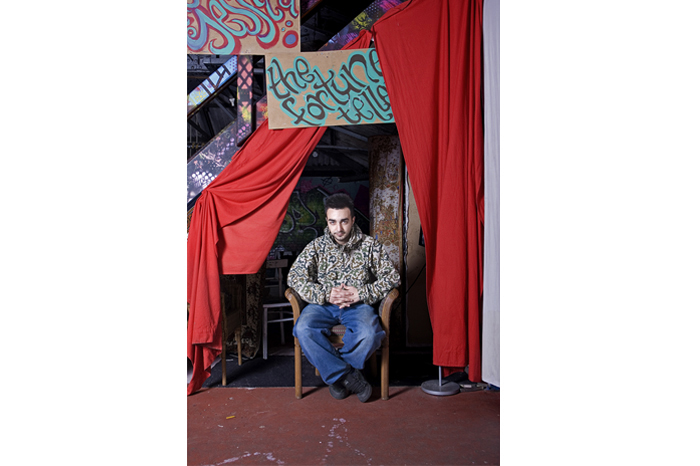If we understand that images are fundamental to the human process of recognition, we can then consider that all visual texts are, at the same time, more or less true representations of a reality.
The representation of social groups rarely manages to disassociate itself from the stereotype, the reduction which serves to establish a guideline to direct our perceptions.
Stereotypes encrypt our reactions to others and establish a system of social conventions which we use without questioning. We form general ideas from details and very little knowledge.
In Great Britain, in the 1960’s, the “squatters” emerged, a movement descending from punk which aims to lead a critical theory that makes them differ greatly from a system which had completely marginalized them.
With similar intent, the movement extends throughout Europe by way of the Dutch “crackers”, the German “besetzers” and the Spanish “okupas”. Their marked ideology, together with their particular look, contributed in forging a stereoptype which, in reality, resists abandoning its image.
The common idea of any of these movements leads us to forced identities, invaded by preconceived images. Without questioning, we see marked aesthetic and ideological inbred codes, preconceived and pre-assigned roles.
The objective of this project is to update the significance of this movement, which is disassociated from past stereotyping, starting from a harmonious interaction between space and the individual, showing a new facet of “squatting”, in which space and the individual take a leading role, showing themselves as clear exponents of change. A renewed reality on the verge of a new representation.
Si entendemos que la imagen es fundamental para el proceso cognitivo del ser humano, debemos considerar que todos los textos visuales son, a su vez, representaciones más o menos acertadas de una realidad.
La representación de los movimientos sociales muy difícilmente logran disociarse de estereotipos, procesos reduccionistas que sirven para establecer marcos de referencia para orientar nuestras percepciones.
Los estereotipos codifican nuestras reacciones frente a los demás y establecen un sistema de convenciones sociales que utilizamos sin cuestionar. Ideas generalizadas que asumimos a partir de detalles simplistas y con muy poco conocimiento.
En Gran Bretaña, en los años 60, surgieron los squatters, movimiento descendiente del punk que pretende abanderar una teoría crítica que los llevase a diferenciarse de un sistema que los había marginado por completo.
Con intenciones similares el movimiento se extiende por toda Europa a mano de los crackers holandeses, los besetzers alemanes o los okupas en España.
Su marcada ideología, acompañada de una estética muy particular contribuyeron a forjar un estereotipo que, actualmente se resiste a desvincularse de su imagen.
La idea común sobre cualquiera de estos movimientos nos llevan a identidades forzadas, invadidas por imágenes preconcebidas. Visualizamos sin cuestionar códigos endogámicos muy marcados estética e ideológicamente, retratos preestablecidos y roles preasignados.
El objetivo de este proyecto es actualizar el significado de este movimiento, hoy desmarcado de estereotipos pasados, partiendo de una interacción armoniosa entre espacio e individuo, mostrando la nueva cara de la okupación, en la que espacio e individuo asumen el protagonismo, mostrándose como exponente claro del cambio. Una realidad renovada al acecho de una nueva representación.

